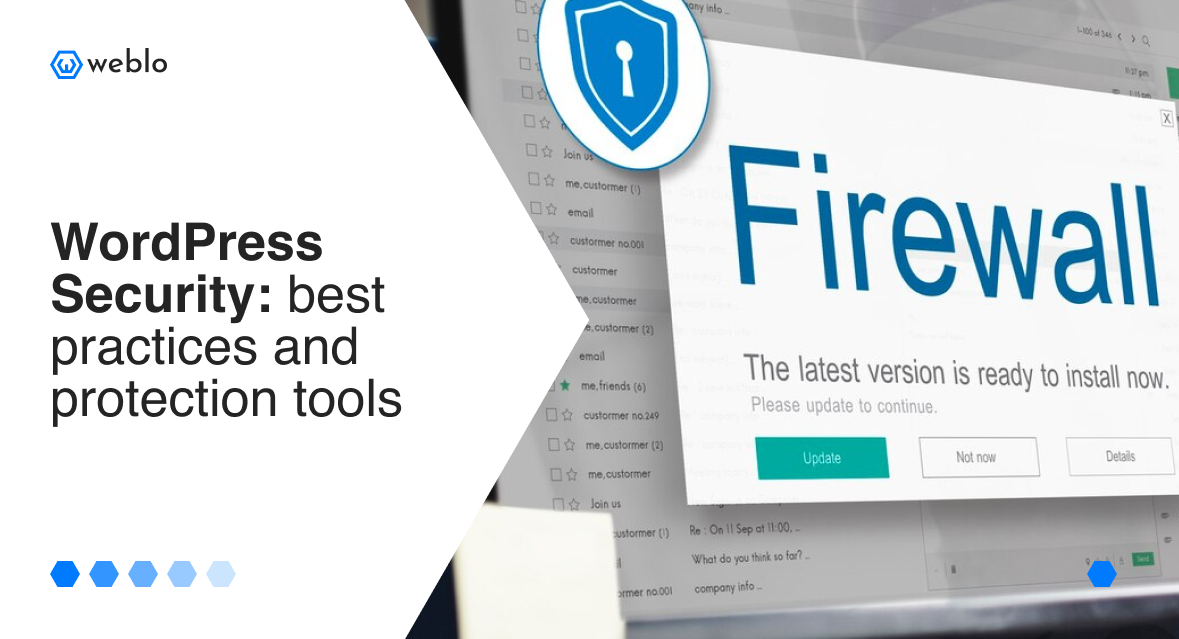WordPress security: best practices and protection tools.
WordPress is the most popular content management system (CMS) in the world, powering millions of websites. Unfortunately, its popularity and frequency of use make it a common target for cyberattacks. To protect your WordPress site, it’s worth knowing the best practices and tools that will help secure your site. Below are the key steps you should take!
1. Don’t skip updates!
Regular updates are a basic security principle. WordPress, plugins, and themes are regularly updated to eliminate security holes. Not updating your software regularly is an open door for hackers.
• Automatic updates: You can set up automatic updates so you don’t have to worry about manually downloading new versions.
• Testing updates: Before rolling out updates to your production site, test them in your development environment to make sure they won’t cause any problems.
2. Strong passwords are essential.
Passwords are the first line of defense against unauthorized access. Using strong passwords and enabling two-step verification (2FA) increases your level of security.
How to check if your password is sufficient?
• Password Generator: Use a password generator to create complex passwords.
• Password Manager: Using a password manager makes it easier to manage your passwords and ensures that each password is unique.
• 2FA Plugins: Install a plugin that lets you add two-step verification to your WordPress admin panel.
3. Brute Force – the most common type of hacker attack on CMS tools
Brute force attacks are attempts to guess a password by automatically searching through all possible combinations. To protect yourself:
• Limit login attempts: Plugins like Limit Login Attempts allow you to limit the number of login attempts, reducing the risk of a successful brute force attack.
• CAPTCHA: Add a CAPTCHA test to login forms to prevent bots from attacking your site.
4. Use ONLY trusted plugins and themes.
Only installing plugins and themes from trusted sources is another step towards increased security.
How to check this trustworthiness?
• Trusted sources: Download plugins and themes only from the official WordPress repository or from trusted developers.
• Regular audits: Regularly check installed plugins and themes for updates and remove those you don’t use.
6. Safety plugs
There are many plugins that can help secure your WordPress site.
• Wordfence: A comprehensive security plugin that offers a firewall, malware scanning, brute force protection, and more.
• Sucuri Security: A tool that monitors changes to your site, blocks malicious attacks, and provides a web application firewall.
• iThemes Security: This plugin offers a variety of security features, including file change detection, brute force protection, and the ability to hide the login page.
7. Regular backups – they will come in handy in crisis situations!
Backups are the last line of defense. Regular backups allow you to quickly restore your site after an attack.
• Automate backups: Use plugins like UpdraftPlus or BackupBuddy to automatically create backups.
• Store copies off-site: Make sure your backups are stored on off-site servers or in the cloud so they are accessible in the event of a primary server failure.
8. Monitoring and Security Audit
Regularly monitoring your site’s security allows you to detect potential threats early.
• Log monitoring: Regularly review your server and WordPress logs to catch any suspicious activity.
• Security audit: Conduct regular security audits to ensure all settings are optimal and in line with best practices.
We also help you properly secure your resources!
If you need help securing your WordPress site, we are here for you!
We have been working with WordPress for over 6 years and have completed over 100 projects for our clients. We have the experience and knowledge to effectively secure your site, taking care of every detail. Contact us to learn more and take care of the security of your site!




